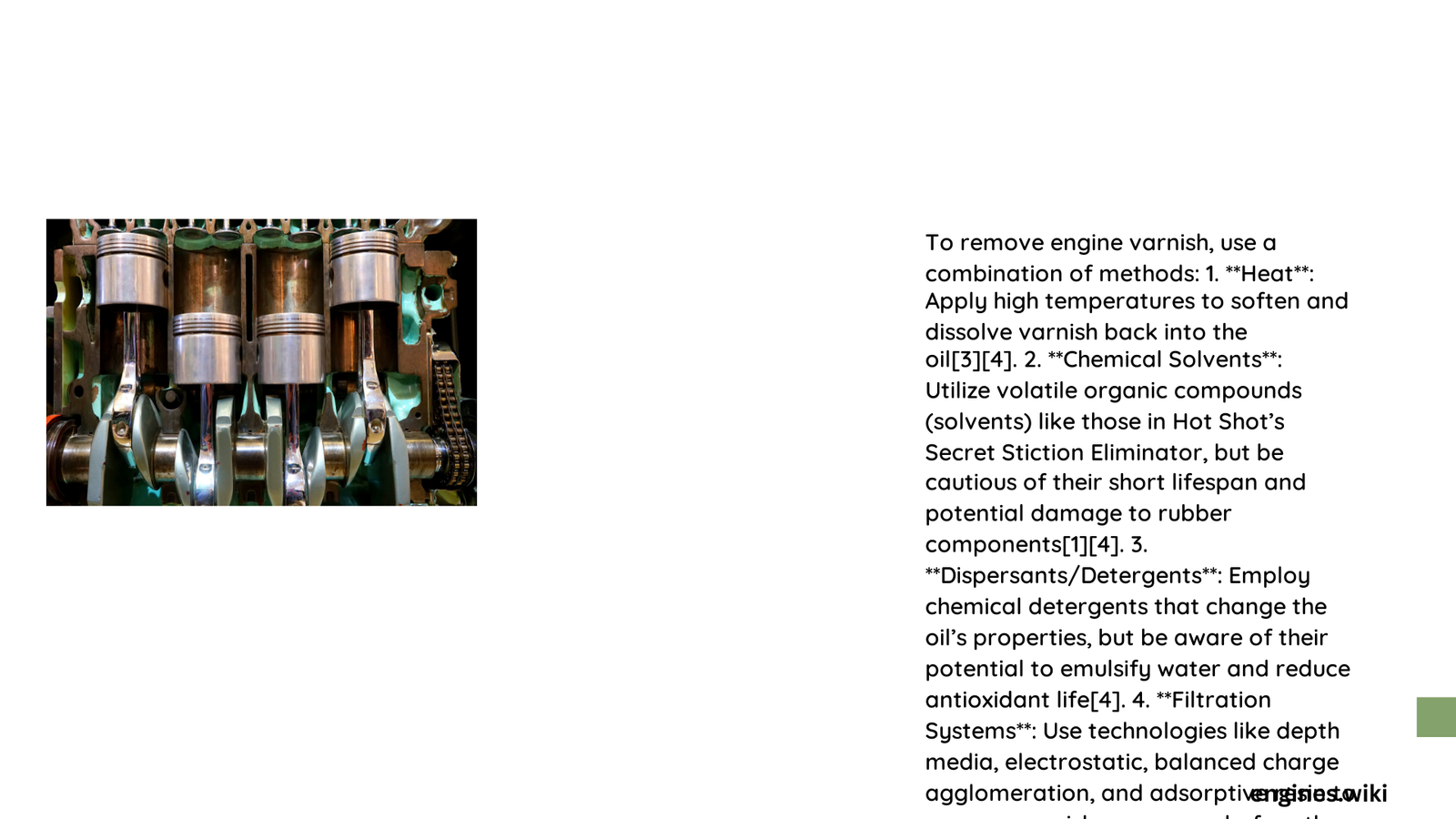Engine varnish represents a critical performance-degrading phenomenon that impacts machinery efficiency, causing increased friction, reduced heat transfer, and potential mechanical failures. Varnish buildup occurs through complex chemical interactions involving oil oxidation, thermal stress, and contamination, requiring specialized removal techniques that address root causes and prevent future accumulation.
What Causes Engine Varnish Formation?
Chemical Breakdown Mechanisms
Engine varnish develops through multiple interconnected processes:
- Oxidation: Lubricant molecular breakdown
- Thermal Stress: Temperature-induced chemical transformations
- Contamination: Particulate and metallic interactions
Quantitative Risk Factors
| Temperature Range | Oxidation Risk | Varnish Formation Potential |
|---|---|---|
| 40-60°C | Low | Minimal |
| 60-80°C | Moderate | Developing |
| 80-100°C | High | Significant |
| >100°C | Critical | Extreme |
How to Identify Engine Varnish?

Visual Diagnostic Indicators
Recognizing varnish requires careful inspection:
- Color Changes: Brownish-yellow deposits
- Texture: Sticky, lacquer-like residue
- Surface Appearance: Uneven, glazed coating
- Component Discoloration: Metallic surfaces losing original finish
What Are Effective Removal Techniques?
Electrostatic Purification Method
Electrostatic purification represents an advanced varnish removal technique involving:
- Charging Varnish Precursors: Electrical field manipulation
- Particle Agglomeration: Facilitating easier filtration
- Continuous Processing: Minimal system downtime
Chemical Cleaning Approach
Chemical cleaning involves strategic fluid circulation:
- Specialized Solvents: Targeted deposit dissolution
- Circulation Protocols: Systematic cleaning procedure
- Post-Treatment Flushing: Residual chemical removal
Which Products Work Best?
Top Recommended Solutions
- Vartech Industrial System Cleaner
- Advanced lubrication chemistry
- Continuous electrostatic cleaning
-
Proven oxidation stability
-
Hot Shot’s Secret Stiction Eliminator
- Unique formula targeting sludge
- Improves lubrication performance
- Reduces engine wear
Prevention Strategies
Maintenance Best Practices
- Regular oil analysis
- Consistent temperature monitoring
- High-quality filtration systems
- Proactive contamination control
Technical Considerations
Performance Impact
Effective varnish removal can:
– Restore heat transfer efficiency
– Reduce mechanical friction
– Extend equipment lifespan
– Minimize unexpected downtime
Expert Recommendations
Professional Maintenance Protocol
- Conduct quarterly oil analysis
- Implement continuous monitoring
- Use preventative cleaning solutions
- Train maintenance personnel
Cost-Benefit Analysis
Investment vs. Protection
| Maintenance Level | Annual Cost | Potential Savings |
|---|---|---|
| Minimal | $500 | $0-$1,000 |
| Moderate | $1,500 | $2,000-$5,000 |
| Comprehensive | $3,000 | $5,000-$15,000 |
Conclusion
Engine varnish removal requires a multifaceted approach combining advanced technologies, strategic maintenance, and proactive monitoring. Understanding root causes and implementing systematic removal techniques ensures optimal machinery performance and longevity.
